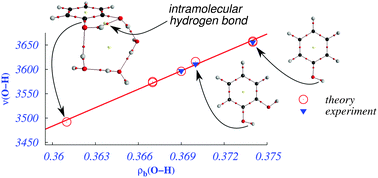Theoretical analysis of hydrogen bonding in catechol–n(H2O) clusters (n = 0…3)†
Abstract
The electronic structure and

* Corresponding authors
a
Departamento de Física y Química Teórica, Facultad de Química, UNAM, Circuito Escolar, Ciudad Universitaria., México
E-mail:
jesus.hernandez@correo.unam.mx
Fax: 52 55 5622 3776 x 107
Tel: 52 55 5622 3867
b
Laboratorio de Fisicoquímica Analítica, Unidad de Investigación Multidisciplinaria, Facultad de Estudios Superiores Cuautitlán, UNAM, Cuautitlán Izcalli, Estado de México, México
E-mail:
bgzaleta@gmail.com
The electronic structure and

 Please wait while we load your content...
Something went wrong. Try again?
Please wait while we load your content...
Something went wrong. Try again?
B. Gómez-Zaleta, R. Gómez-Balderas and J. Hernández-Trujillo, Phys. Chem. Chem. Phys., 2010, 12, 4783 DOI: 10.1039/B922203K
To request permission to reproduce material from this article, please go to the Copyright Clearance Center request page.
If you are an author contributing to an RSC publication, you do not need to request permission provided correct acknowledgement is given.
If you are the author of this article, you do not need to request permission to reproduce figures and diagrams provided correct acknowledgement is given. If you want to reproduce the whole article in a third-party publication (excluding your thesis/dissertation for which permission is not required) please go to the Copyright Clearance Center request page.
Read more about how to correctly acknowledge RSC content.
 Fetching data from CrossRef.
Fetching data from CrossRef.
This may take some time to load.
Loading related content
